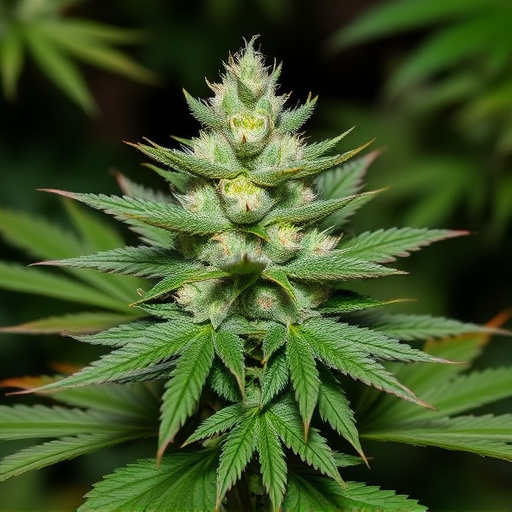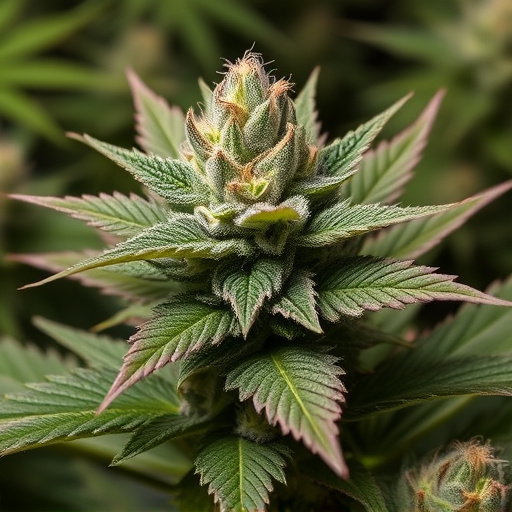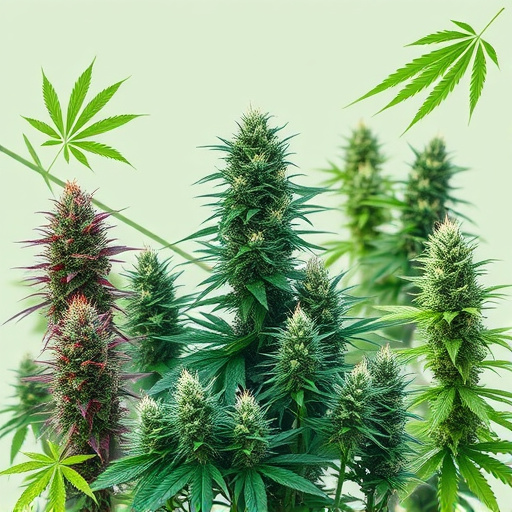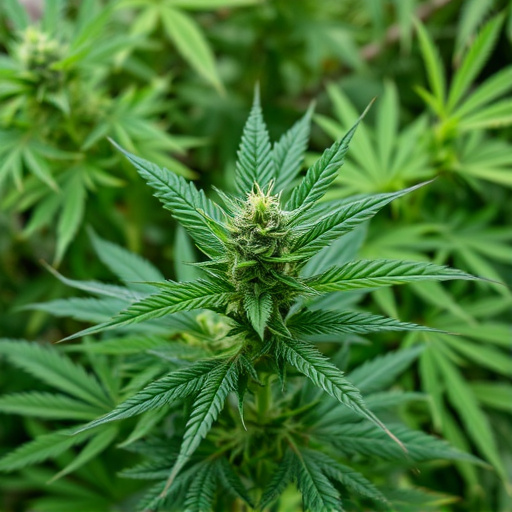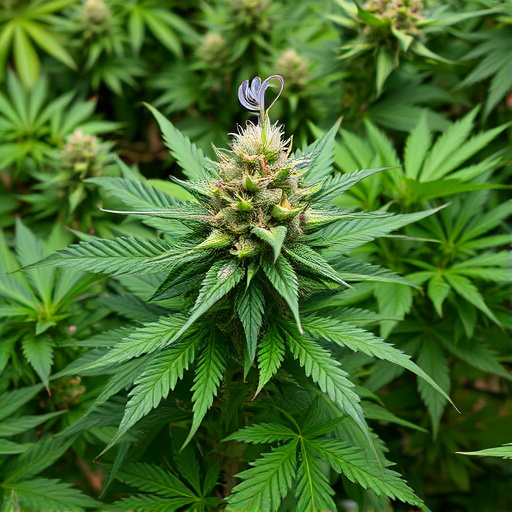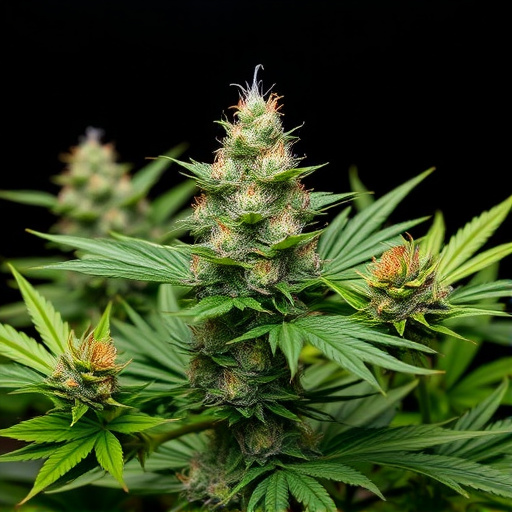Terpenes, aromatic compounds in medical cannabis strains, enhance the effects of cannabinoids like THC and CBD. Each terpene has unique therapeutic properties; for example, myrcene aids sleep and anxiety relief while limonene boosts mood and cognitive function. Understanding terpene profiles allows patients to select strains tailored to their health concerns, optimizing the benefits of natural remedies. Key terpenes like myrcene and limonene offer targeted treatments for conditions such as arthritis, insomnia, anxiety, and stress. Informed decisions about specific terpene profiles ensure medical cannabis strains align with desired outcomes, providing effective and enjoyable treatment experiences.
“Unraveling the secrets of terpenes in cannabis flower reveals a complex world of aromatic compounds that contribute to both the plant’s distinctive flavor and its therapeutic potential. This article delves into the intricate role of terpenes, exploring their significance in medical cannabis strains and how specific profiles can cater to diverse treatment needs. From uplifting to relaxing effects, understanding terpenes offers insights into tailoring cannabis experiences for optimal wellness.”
- Understanding Terpenes: The Aromatic Compounds in Cannabis
- The Role of Terpenes in Medical Cannabis Strains
- Exploring Specific Terpene Profiles for Different Treatment Needs
Understanding Terpenes: The Aromatic Compounds in Cannabis
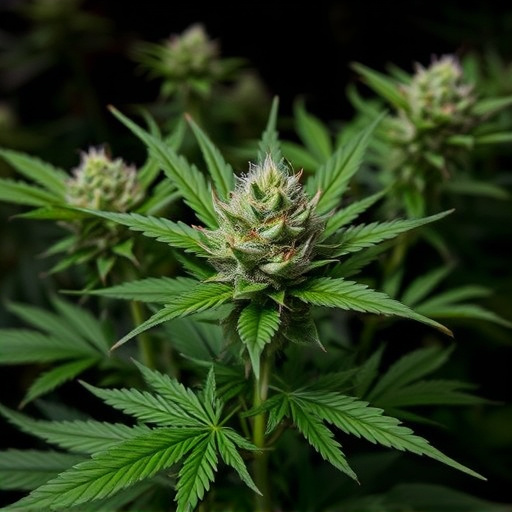
Terpenes, often referred to as aromatic compounds, are a diverse group of volatile oils responsible for the distinct scents and flavors associated with cannabis flowers. These natural chemicals play a crucial role in both the botanical and medicinal properties of medical cannabis strains. With over 100 different types identified so far, terpenes not only contribute to the unique aroma and taste profiles we associate with different cannabis varieties but also interact synergistically with cannabinoids like THC and CBD, enhancing or modifying their effects.
Each terpene possesses its own therapeutic potential, making understanding them essential for those seeking the benefits of medical cannabis. For instance, myrcene is known for its relaxing and sedative properties, often sought after for treating insomnia and anxiety. Limonene, on the other hand, is linked to mood elevation and cognitive enhancement, making it appealing for individuals dealing with depression or concentration issues. By recognizing and utilizing the terpene profiles within medical cannabis strains, consumers can tailor their experience to address specific health concerns and optimize the benefits they derive from these natural remedies.
The Role of Terpenes in Medical Cannabis Strains
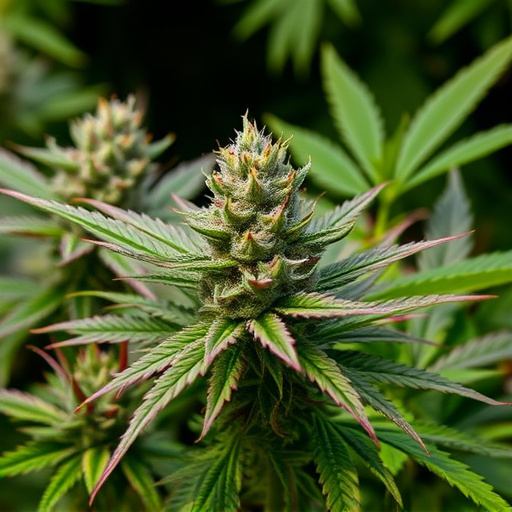
Terpenes play a pivotal role in medical cannabis strains, contributing significantly to their therapeutic potential and diverse effects. These aromatic compounds, naturally present in cannabis, offer more than just a pleasant scent and taste. They interact with the body’s endocannabinoid system (ECS), which regulates various physiological processes, including pain perception, mood, and inflammation. Each terpene has unique properties; for instance, myrcene is known for its sedative effects, making it beneficial for insomnia or anxiety, while limonene boosts mood and may aid in stress relief.
In medical cannabis strains, the careful selection and cultivation of specific terpenes can enhance the overall therapeutic experience. Patients often seek particular terpene profiles to target specific conditions. For example, high levels of beta-caryophyllene (BCP) have been linked to anti-inflammatory properties, making it attractive for arthritis or chronic pain sufferers. Understanding terpene interactions allows patients and healthcare providers to tailor treatment options, ensuring the best possible outcomes for medical cannabis users.
Exploring Specific Terpene Profiles for Different Treatment Needs

When exploring medical cannabis strains, understanding terpene profiles is key to tailoring treatment to specific needs. Terpenes are aromatic compounds naturally produced by plants, including cannabis, that contribute to the unique scent and flavor of different strains. They also play a significant role in the potential therapeutic effects of cannabis. For instance, myrcene, one of the most prevalent terpenes, is known for its sedative and sleep-promoting properties, making it beneficial for managing insomnia or anxiety. Meanwhile, limonene, with its citrusy aroma, may enhance mood and provide anti-inflammatory benefits.
By examining the specific terpene profiles of various medical cannabis strains, patients and healthcare providers can make more informed decisions. Some profiles may be better suited for pain relief, inflammation reduction, or stress and mood regulation. This personalized approach ensures that the chosen strain aligns with the individual’s desired outcomes, offering a more effective and potentially enjoyable medical cannabis experience.
Terpenes, the aromatic compounds found in cannabis flowers, play a significant role in both the plant’s distinctive scent and its potential therapeutic effects. As we’ve explored, different terpenes offer various benefits, making them crucial to consider when selecting medical cannabis strains for specific treatment needs. Understanding terpene profiles allows users to make informed choices, enhancing their overall experience and potentially amplifying the positive effects of cannabis.



